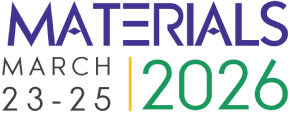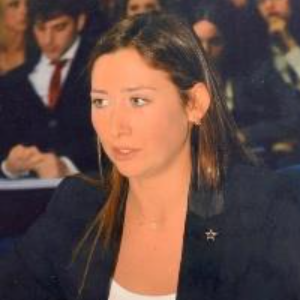Title : Towards a more rational design of polymer-based coating of gold nanoparticles
Abstract:
The rapid development of nanotechnology has strongly encouraged scientific research in the field of manufacturing, characterization, and use of nanoparticles. Recently, gold nanoparticles (AuNPs) have become the subject of intense research due to their optical, electronic, and molecular recognition properties. In a wide range of applications AuNPs are relevant, such as energy (e.g. solar desalination[1], [2]) and medicine (e.g. diagnosis and therapy[3], [4]). In the medical field, the biocompatibility and the biodegradability of nanoparticles are one of the main challenges. Surface coating of AuNPs with Poly(Lactic-co-Glycolic Acid) (PLGA) polymers is generally adopted as a solution, i.e., to improve their biodistribution[5]. However, a greater theoretical understanding of the adsorption phenomenon of PLGA polymers onto the AuNPs surface would be a key step to enhance the effectiveness of AuNP design and loading into the PLGA matrix for various biomedical applications. Here, we demonstrate the efficiency of coupling different computational approaches to investigate the interactions of an AuNP with PLGAs, aiming at determining the most favorable surface shape for adsorption. First, we carry out classical molecular dynamics simulations by tuning the PLGAs concentration in an aqueous solution. Then, we investigate the time evolution of the self-assembly phenomenon of PLGAs with consequent adsorption of polymer clusters on the AuNPs using an unsupervised machine learning scheme. In addition, a thorough analysis of PLGA coating of the AuNP surface, combined with the AuNP-PLGA free energy landscape calculation during the adsorption mechanism shed light on its anisotropic nature. In particular, our findings unveil a preferential PLGA adsorption on the {1 1 1} crystalline planes of the AuNP model. The modeling framework suggested in our work provides physical insights into the PLGAs adsorption onto AuNPs and suggests some guidelines to rationally design PLGA-coated AuNPs [6].
Audience take away:
Using classical molecular dynamics simulations, here we clarify how the coating process of gold nanoparticles is achieved and how this is influenced by surface morphology in addition to surface chemistry. The suggested modelling framework is based on open-source software packages (e.g. GROMACS) and in-house codes written in Python language. Importantly, the methodological approach is user-friendly and can be adopted to study similar phenomena at the nanoscale interface. This research may also be useful to other faculty because it allows them to improve the physical-chemical insights in NP interaction potentials. In addition, it draws preliminary guidelines for the rational design of nanoparticle suspension. Specifically, we demonstrate that the surface morphology of the gold nanoparticle with a predominance of {1 1 1} planes allow for a more effective coating of polymers on the surface, by tuning the surface ratio between the tested crystalline planes of the nanoparticle.



